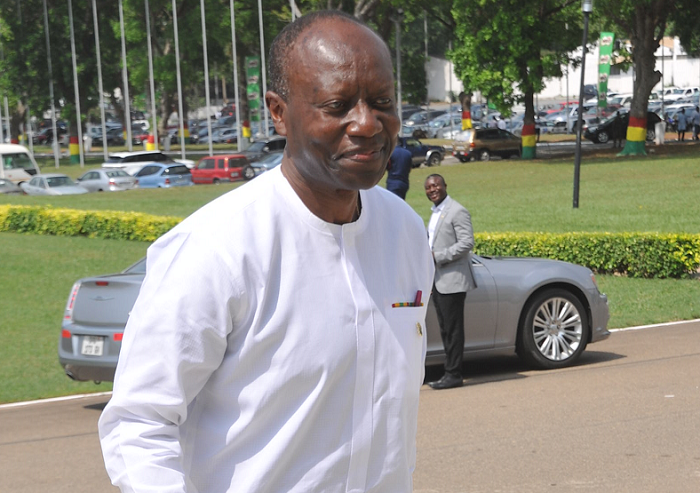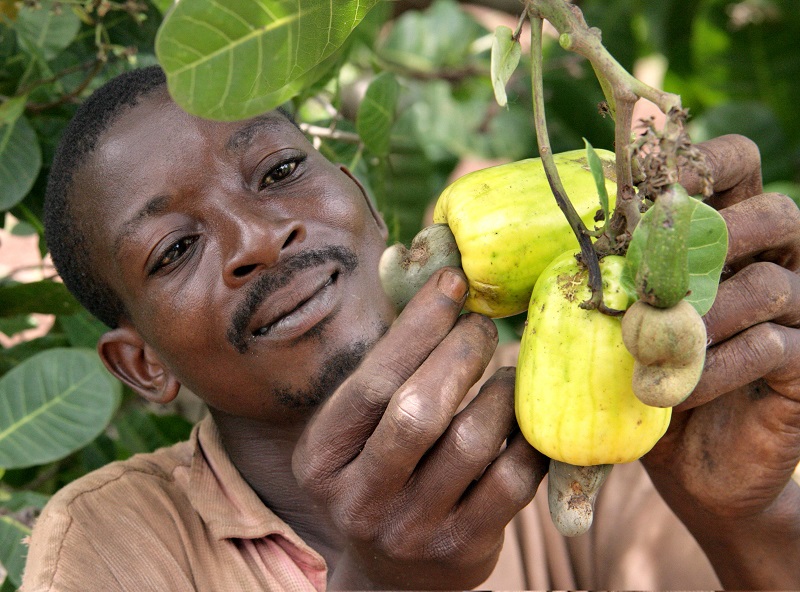
Continued from last week
Utilisation of 2016 ABFA
The 2016 ABFA was disbursed to the fewest ever number of projects/programmes since the introduction of the mechanism in 2011. So few were the projects that the detail list could fit into the main body of this report rather than the annexure as has been the practice since 2013 when the MoF started publishing the list as part of the Reconciliation Report. From an average of 51 road projects per year over the five (5) years preceding 2016, the number of road projects supported by the ABFA dropped to eight (8) in 2016, of which only one (1) was a new project compared to an average of 36 new projects that were being introduced each year from 2011-2015. Similarly, the allocations to other infrastructure was spent on a handful of projects/programmes with all the disbursements to the energy sector going into the procurement of materials for the National Electrification Scheme while only three sea defence wall projects (two on-going projects and one new) were funded under water infrastructure. Allocation to the Agriculture Modernisation priority area was spent on fertiliser subsidy programme and three irrigation projects while the entire disbursement to the Capacity Building priority area was for outstanding scholarship claims.
The disbursement of the 2016 ABFA is even more remarkable, considering the fact that it was an election year. Compared to the 2012 financial year (which was an election year), the ABFA was used to fund projects and programmes in 12 different sectors. PIAC is satisfied that its perennial call to the Minister of Finance to concentrate the utilisation of ABFA on smaller number of projects selected from few sectors of the economy has been heeded. It is the Committee’s hope that this practice would continue so as to ensure efficient allocation of our petroleum revenues.
Delay in the evacuation of raw gas from the TEN field
PIAC is, to say the least, unhappy that significant volumes of raw gas produced from the TEN Field is being flared, while there is such a high demand for lean gas and other derivatives on shore. As presented in this report, 71% of the gas produced in 2016 was flared. With first associated gas export not due until August 2017 (at the earliest) and non-associated gas not expected until 2018, a lot more natural gas would be flared during the first half of 2017. The Committee cannot fathom why construction of the US$100 million approximately 30-kilometre 12-inch bi-directional13 gas import/export subsea pipeline could not have been timed to coincide with first oil in August 2016, especially when a decision was taken by the Jubilee Partners to fast-track the Field into operation in August 2016 with gas production, instead of the scheduled August 2017 for first gas.
In fact, it was not until July, 2016 (barely one month before first oil) that the Chief Executive Officer of Tullow Ghana announced that the operators of the Field were in discussions with the Government of Ghana to fast-track export of gas for power generation ahead of schedule. It is unclear how quickly gas exports could be fast-tracked to bring the much-needed resource onshore. What is clear however is that the period between August 2016 and whenever gas export from the Jubilee Field would be achieved, would represent a missed opportunity to have earned additional revenue, reduce the cost of electricity generation, and minimise the adverse environmental effects associated with the flaring of gas.
13 The pipeline will import gas from the Jubilee for commissioning of gas compression and handling system at the TEN FPSO prior to first oil.
Recommendations
It the light of the foregoing, PIAC wishes to submit the following recommendations for the consideration of the relevant authorities:
- Given that the GNGC may well have been caught up in the vicious cycle of the indebtedness of the energy sector utilities (which stood at US$2.4 billion at the end of 2016), urgent and drastic measures would have to be devised by all key stakeholders to ensure immediate payment of the outstanding receivable owed the Ghana Petroleum Fund in respect of gas sales.
One potential source of funds that could have been used to defray VRA’s indebtedness to GNGC is the Power Generation and Infrastructure Support Sub-Account (PGISSA)14 established under the Energy Sector Levy Act, 2015 (Act 899). However, the proceeds going into the PGISSA have been earmarked for the repayment of the debt owed by VRA to 11 domestic banks as part of the strategy introduced by the government to deal with legacy debt problem facing the State-owned energy sector utilities. Since termination of supply to VRA is not an option as yet, due to lack of alternative market for lean gas, PIAC is calling for an immediate meeting between the Government, GNPC and GNGC to agree on a clear roadmap for the clearing of VRA indebtedness.
- The Ghana Revenue Authority (GRA) must ensure that all outstanding annual surface rentals are paid with interest;
- GRA must ensure that auditing of tax returns filed by the Jubilee Partners are carried out expeditiously so that any additional assessment payable is paid on time;
- The Bank of Ghana and/or the Ministry of Finance should seek expert advice on hedging and consider undertaking hedging activities as part of strategies to mitigate Ghana’s exposure to commodity price risk/volatility associated with future oil production;
- GNPC needs to be impressed upon to procure a Loss of Production Insurance (LOPI) or Business Interruption Insurance if it does not have one already;
14 The PGISSA is to be used to support payment of power utility debt, ensure power supply, power generation and infrastructure support resources and support power infrastructure risk mitigation.
- PIAC still maintains that GNPC should desist from spending part of its dwindling allocations on non-core businesses such as financing of the Western Corridor Roads. The GNPC explained to PIAC that it was requested to provide financial support for the said roads because of their position as the Gas Aggregator. The Committee however holds a different view and wishes to reiterate its suggestion in its 2016 Semi-annual Report that such road projects should either be funded with part of the ABFA or a separate loan contracted for that purpose thereby freeing funds for critical investments in the areas of GNPC’s core mandate. Similarly, PIAC’s is of the view that GNPC should not be bearing the cost of the ITLOS litigation on behalf of the State and that such expenditure should be charged either on the Consolidated Fund or Contingency Fund;
- GNPC should disclose what steps it is taking to retrieve the US$50 million loan it advanced to the Ministry of Finance in respect of the Western Corridor Roads.
- The Government should impress upon the Jubilee Partners to expedite work on the gas export infrastructure;
- The ABFA allocation to road infrastructure should continue to be spent on fewer road projects so as to ensure timely completion of beneficiary projects.
End of series!
Source: PIAC






























